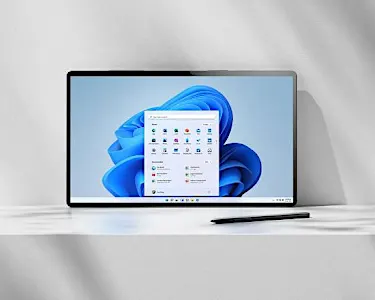The Acer Aspire Vero has admirable green credentials, modest price, everyday performance and decent battery life. However, its display, keyboard and build quality are lacking

Should I buy the Acer Aspire Vero (2021)?
Our Verdict
The Acer Aspire Vero has impressive green credentials, solid mainstream performance and decent battery life in a chassis with reasonable connectivity. It's affordable, too. But Acer's machine also has an underwhelming display and keyboard, and the CPU throttles too - so more power and quality can easily be found elsewhere at similar prices.
Price when reviewed
From $699
Acer Aspire Vero (2021) full review
The Acer Aspire Vero takes a markedly different approach to most other laptops on the market – because it focusses on its environmental credentials ahead of other factors, like price or performance.
Acer makes a big deal about the Vero’s (the AV15-51) recycled materials, for instance, and the firm claims that the box works as a laptop stand after you've removed the machine.
Sustainability is a big subject that’ll inevitably become bigger, so we won’t be surprised if more laptops make more noise in this area – but Acer is one of the first to take the initiative.
The model we’ve reviewed is the more affordable Core i5 specification, and it costs £649 in the UK and $699 in the US – so it’s not particularly expensive. Is the Vero a good laptop and good for the environment, though, or does this green machine suffer in real-world use?
Design & Build
- Impressive green credentials
- Divisive, paint-free aesthetic
- Good connectivity, but relatively thick and heavy
Much of the Acer Aspire Vero’s body uses PCR, or Post-Consumer Recycled material, and Acer is quick to boast about the amount of second-hand stuff inside this notebook. The chassis and screen bezel use 30% recycled hardware, and the screen and keycaps use 99% and 50% recycled material respectively.
Ultimately, Acer says that the Vero’s chassis construction produces 21% less CO2 than a conventional 15.6in laptop. It’s not just about the laptop, either: the box uses 85% recycled paper, and the plastic in the packaging is 100% recycled. The box also converts into a laptop stand.
That’s impressive, and undoubtedly good for the environment. Still, the Vero is not the front-runner when it comes to many of these statistics – even if other companies don’t necessarily boast about it. Apple’s MacBook Pro laptops have used 100% recycled aluminium since 2018, and many HP Elite Dragonfly notebooks use more recycled materials than the Vero.
Acer’s machine is not shy about its eco-friendly credentials. A PCR logo is stamped into the wrist-rest, so it's not even a sticker you can remove. The lack of paint is another move made to reduce reliance on potentially harmful substances. Instead, the Vero is grey, with a flecked yellow pattern that’s reminiscent of cardboard or concrete. It’s eye-catching, but won't be to everyone's taste.
The Vero has two USB 3.2 Gen 1 ports and a USB 2.0 connection alongside HDMI and audio outputs. Internal connectivity comes from dual-band Wi-Fi 6, Bluetooth 5.0 and Gigabit Ethernet, and there’s a fingerprint reader and a webcam.
There’s a USB-C port, but it doesn’t work for charging the notebook, and the Vero doesn’t have a card reader or Thunderbolt.
The underside is secured with conventional screws, so it’s easy to replace and upgrade components. That’s helpful, although that’s not unusual for a mainstream, mid-rangelaptop.
There’s plenty to like about this eco-friendly notebook, but the Vero weighs 1.8kg and is 20mm thick – and that figure rises to 23mm when the rubber feet are included.
It’s larger and heavier than rivals. The Samsung Galaxy Book is a 15.6in laptop that weighs 1.55kg and is 15.4mm thick, and the 14in Huawei MateBook D 14 is even lighter. Both laptops look better than the Vero, and the Samsung has a microSD card slot to boot.
The Vero’s build quality doesn’t really impress, either. There’s noticeable movement on the wrist-rest and the underside flexes. The plastic above the keyboard is flimsy, and the display is easy to twist. If you want a laptop to last for years – so you can avoid electronic waste – the Acer doesn’t inspire huge amounts of confidence.
Keyboard & Trackpad
- Fine for everyday typing
- The hollow, rattling feel won't suit hardcore typists
- Irritating reversed R and E buttons
The Acer Aspire Vero’s keyboard is fine for everyday use – it’s fast, crisp, and not particularly loud. It’s got a numberpad, a large space bar and a double-height return key. For web browsing, emails, and documents, it’s fine.
More demanding users won’t be satisfied, though. The buttons feel a bit too hollow and rattle a little too much, and they could be larger – especially on the numberpad and cursor keys. The backlight doesn’t have adjustable brightness either.
The R and E keys could distract slower typists, too: they’re installed backwards and with their font in yellow to highlight recycling.
The trackpad is fine if a little soft, so I've got no complaints there and it's got a fingerprint scanner built-in. But if you want a snappier and more solid keyboard, the Samsung is a better choice.
Screen & Speakers
- A 15.6in, 1080p, IPS display
- Poor brightness and colour reproduction
- Surprisingly good audio
The 15.6in panel has a 1920 x 1080 resolution and a matte finish. It’s a non-touch IPS display, and it’s fine for web-browsing and working in Office apps.
Delve into benchmarks, though, and the Vero disappoints. The panel’s brightness level of 270 nits is only good enough for indoor use. The Delta E of 5.16 is average, and the display only renders a paltry 58.1% of the sRGB colour gamut. The contrast ratio of 1,350:1 is better, but that doesn’t save this screen.
In real-world terms, this panel is dim and underwhelming. It looks washed out and can’t produce enough colours to make content look its best. While you can use this display for everyday workloads and watching media, nothing has much vibrancy, or nuance.
The Aspire Vero isn’t alone when it comes to producing pallid images, though – the Huawei suffered similarly. The Samsung has marginally better gamut ability alongside a 325-nit brightness level, so it’s noticeably better.
The speakers are good enough for media use thanks to ample volume and a crisp mid-range, but they don’t have much bass. They fire downwards, too, so a sofa or some bedding could see the output muffled. Nevertheless, they’re perfectly fine.
Specs & Performance
- Available with Core i5 and i7 processors
- Some irritating throttling in tougher situations
- Decent battery life
The Acer Aspire Vero I’ve reviewed uses Intel’s Core i5-1155G7. It’s a Tiger Lake chip with four Hyper-Threaded cores, and it has a peak single-core Turbo speed of 4.5GHz.
Most mid-range laptops use the i5-1135G7, which is a little slower. Acer’s machine uses Intel’s integrated Iris Xe graphics, which means you can only play casual games. There’s 8GB of dual-channel memory. In the UK you get a 512GB SSD, but that capacity is halved in the US.
The processor’s Geekbench single- and multi-core scores of 1,446 and 4,821 open a decent lead over the more popular i5-1135G7. That’s ample pace for any everyday task – whether you want to open all of your Office apps, loads of browser tabs or a basic photo-editing tool.
The SSD’s read and write speeds of 2,347MB/s and 1,173MB/s are only average, but they keep the laptop responsive.
It's a decent thermal performer, too. It’s never loud – the most noise you’ll hear is a tiny whoosh of the fan if you really push the internals – and the exterior remained cool, even in stress tests.
The Vero’s performance might be fine for everyday tasks, but the Core i5 CPU is not perfect. The Acer scored 4,544 in PC Mark 10 – about 1,000 points short of this chip’s potential best score.
In tough multi-threaded work scenarios, the chip only managed a peak speed of 3.5GHz. That’s 800MHz short of its multi-threaded boost peak, and it explains the lower PC Mark 10 result. It also means that this laptop isn’t suitable for tough creative workloads.
The pricier model uses the i7-1195G7, which peaks at 5GHz, but it’s likely to suffer from the same throttling issue. The Samsung and Huawei machines didn’t throttle as drastically, so they’ll be better with creative workloads.
Other options around this price point are the Microsoft Surface Laptop Go and the Honor MagicBook 14.
Happily, the Acer gained back some ground in battery tests. The Vero lasted for an impressive twelve hours in a video playback test with the display at 120 nits, and it ran for seven hours and eighteen minutes in a work benchmark.
Those results are better than the aforementioned rivals, and you’ll get this machine through a day of productivity unless you really push the hardware.
Price & Availability
The Core i5 version of the Acer Aspire Vero we’ve reviewed costs £649 in the UK (via Currys) and $699 in the US (via Acer). If you’d like to upgrade to the Core i7 model, expect to pay £849 or $899. If you step up, you don’t just get the better CPU – that machine has 16GB of memory and a 1TB SSD too.
You can also buy the laptop from Amazon UK and Amazon US.
Those prices compare well to rival machines. The Samsung Galaxy Book with a Core i5 processor costs £699 and $749, and its Core i7 variant sits at £899 and $999. The Huawei isn’t available in the US, but in the UK its Core i5 and Core i7 models cost £699 and £849 respectively.
Check out our chart of the best laptops to see all the top options right now. If you need something cheaper then head to our best budget laptop chart.
Verdict
There’s hardly anything to choose between the Acer and its rivals at the checkout, but in other departments, it’s easier to pick the notebooks apart.
The Acer Aspire Vero impresses with its environmental credentials, and it has reasonable battery life, good everyday performance and solid connectivity. It’s good enough to handle mainstream computing.
Negatively, though, the Vero is thicker and heavier than rivals, its keyboard feels hollow, the display disappoints, and the components aren’t good enough for tough workloads. Its looks will divide opinion, and this certainly isn’t the only environmentally conscious laptop on the shelves.
The price makes it a viable laptop if you want an everyday machine with an environmental focus. But if you want great performance, a vibrant display or a slim, light design, look elsewhere.












0 Comments